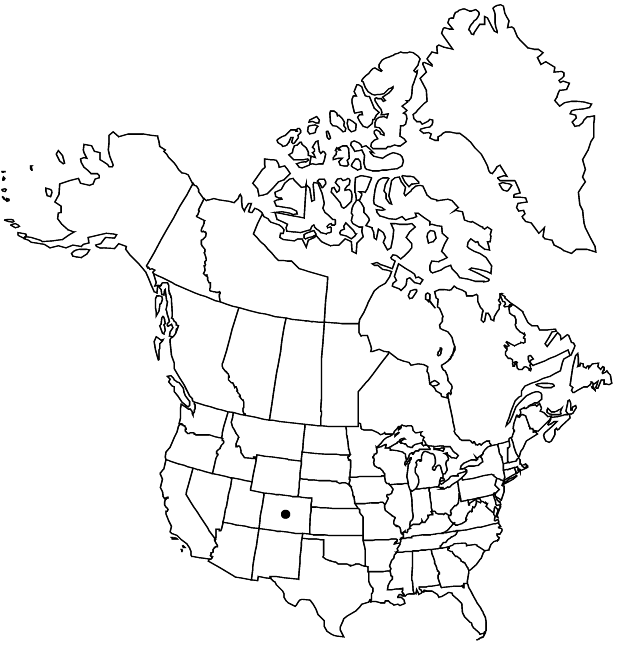Heuchera hallii
Proc. Acad. Nat. Sci. Philadelphia 15: 62. 1864 ,.
Herbs acaulescent; caudex branched or unbranched. Flowering stems 10–30 cm, glabrous or short stipitate-glandular. Leaves: petiole glabrous or short stipitate-glandular; blade rounded-reniform, deeply 5–7-lobed, 1–3.8 cm, base cordate, lobes rounded, margins dentate, apex obtuse, surfaces glabrous or short stipitate-glandular. Inflorescences dense, (sometimes secund). Flowers: hypanthium weakly bilaterally symmetric, free 0.8 mm, greenish or pinkish yellow, broadly campanulate, 4–5.5 mm, short stipitate-glandular proximally, medium stipitate-glandular distally; sepals erect, green-tipped, equal, 1.2–2 mm, apex rounded-ovate; petals usually spreading, white, broadly oblanceolate, (clawed), unlobed, 1.8–2.5 mm, margins entire; stamens included 1 mm; (filaments erect or incurved distally, relatively slender, longer than and not concealed by anthers); styles included 1.5 mm, 1 mm, 0.1+ mm diam. Capsules globose or ovoid, 3.5–4 mm, beaks divergent, not papillose. Seeds dark brown, fusiform, 0.6 mm. 2n = 14.
Phenology: Flowering Jun–Aug.
Habitat: Subalpine and alpine regions
Elevation: 2200-3000 m
Discussion
Heuchera hallii occurs in south-central Colorado. It resembles H. bracteata in shape and size of the flowers and congestion of the inflorescence. It is distinguished by having stamens and styles included; H. bracteata has stamens and styles exserted.
Selected References
None.
